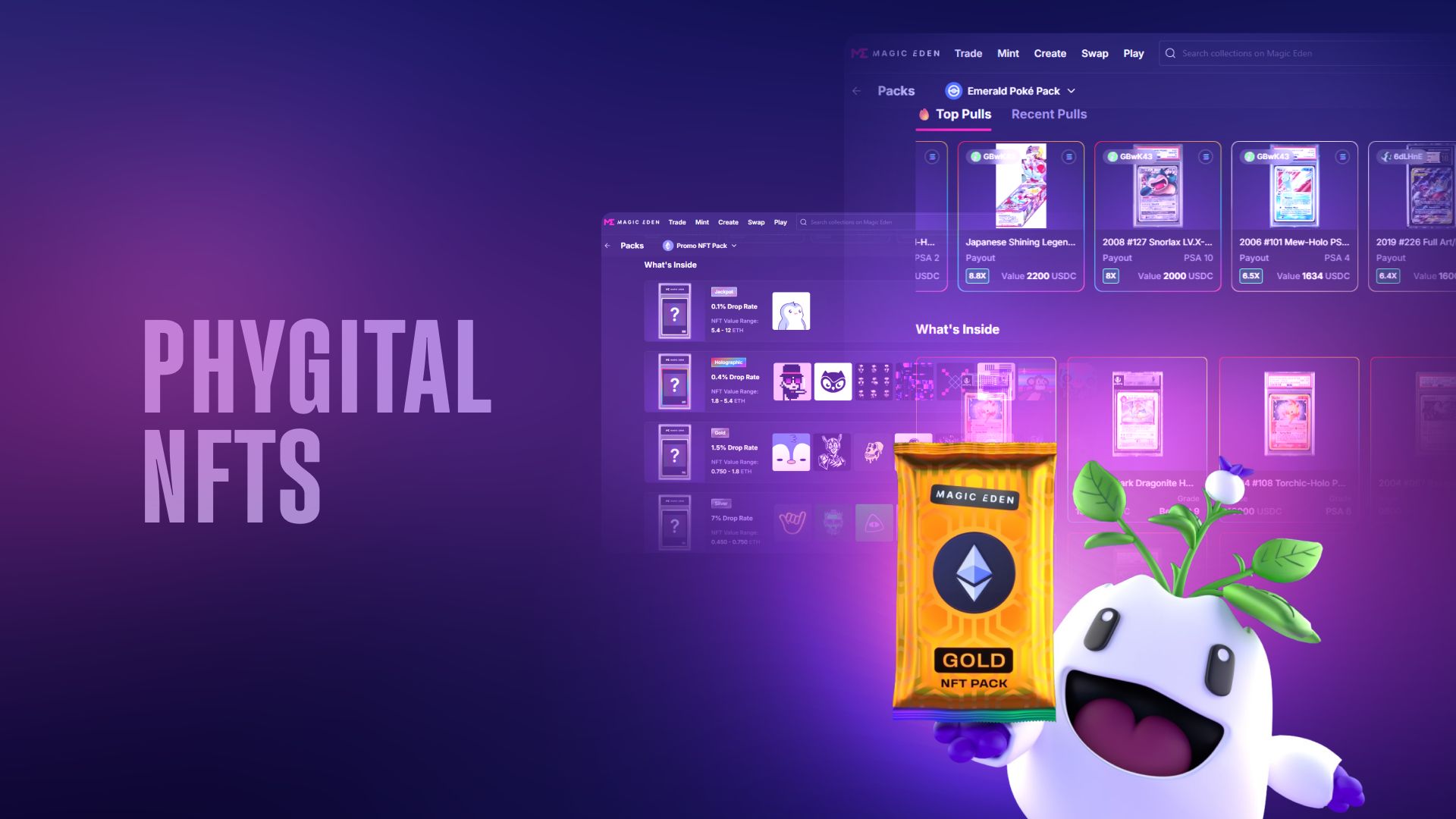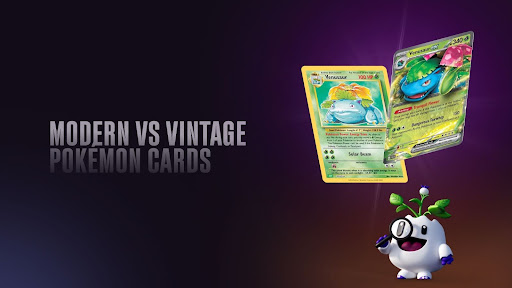
For a while now, we’ve had to juggle the trade-off between speed, security and affordability. But even the smallest compromise on any of these essentials has left us with clunky, inefficient blockchains.
Monad Network is here to stir things up in the Layer 1 space by introducing a high- performance and EVM-compatible blockchain that balances speed, security, and affordability.
Read on to learn what Monad is, how it works, and how it’s meant to shake up things in the decentralized finance space. Not forgetting that you could get yourself a Monad NFT collectible as soon as they launch (hint: you’ll find them on Magic Eden).
Monad is a Layer 1 blockchain compatible with the Ethereum Virtual Machine (EVM) that’s on a mission to reinvent Layer 1s and achieve faster, cheaper, and secure transactions.
Being compatible with EVM means anyone who built on Ethereum can apply their skills to build on Monad too.
The project also boasts some strong stats: it claims to be more scalable than Ethereum (up to 10,000 transactions per second vs up to 15 transactions per second), it has one-second block times, low hardware requirements, and its fees are below one cent.
The team that brought Monad to life consists of co-founders CEO Keone Hon, CTO James Hunsaker, and COO Eunice Giarta.
The team says its experience in low-latency programming and distributed systems design helped them launch Monad Labs in 2022. And as of 2024, they raised $225 million in a fundraising round led by Paradigm and another by OKX Ventures.
Scalability and throughput are two main areas that blockchains want to improve.
Mass adoption is the end goal of practically every blockchain. That means no matter how many users a blockchain has, all of them should be able to use it with no significant issues affecting transaction fees, security and speed.
Monad promises 10,000 transactions per second and one-second block times on a chain that charges less than a cent in gas fees. It’s also designed to handle any number of users at any given time.
Combined with its EVM compatibility, Monad’s features are attractive to Ethereum developers who need a network with a smooth user experience for their Web3 applications.
Monad’s promises are impressive, so we decided to peek under the hood to see how it operates. Here are its main features:
Monad is compatible with the Ethereum Virtual Machine (EVM). However, the team claims very little has been done to improve the existing EVM infrastructure despite 90% of DeFi capital going through EVM-powered blockchain apps.
As such, this Layer 1 implements a custom EVM that combines multiple virtual machines to efficiently process blockchain transactions within its architecture.
They haven’t revealed the specifics, but they promise that all applications, developer tooling, wallets and analytics/indexing tools used on Ethereum can also run on Monad.
In practice, this means both users and devs on Ethereum have it much easier since they won’t have to adopt new standards.
MonadBFT is the name of the consensus mechanism employed by the blockchain. It’s derived from HotStuff, a mechanism relying on three communication phases (proposal, voting, and decision) to reach a consensus.
MonadBFT optimizes the design, reducing the three phases into two to make the chain faster.
The trick lies in quadratic communication in the event of a leader timeout. Normally, the network uses linear overhead communication.
In special cases such as when there's a leader timeout that could lead to bottlenecks, Monad switches to quadratic communication, which keeps the network stable and doesn’t let it slow down.
Monad actually doesn’t need to prioritize consensus for executions, which is pretty uncommon in the blockchain space.
Instead, the leader proposes an ordering even before an execution, without the nodes knowing whether all of the transactions will execute.
As a result, the nodes only vote on whether the ordering within a block is correct — not whether the transactions will execute or not. This approach is called deferred execution because it happens after consensus. It’s estimated to be a more efficient way of cutting down transaction fees compared to the standard way of doing things.
Optimistic executions are another Layer 1 improvement on Monad, allowing for speed, as they let the chain execute transactions in parallel instead of one after another.
“Optimistic” means Monad treats every transaction as valid until proven otherwise. If one of them is invalid, then just that one is re-executed, while the others are already done by that time.
MonadDB is the blockchain’s custom database for storing blockchain state. Instead of storing the entirety of the blockchain’s history, MonadDB only stores current and essential data. Reading from the database is faster and allows parallel execution.
In the case of invalid transactions, MonadDB is used to compare the data against what’s in the database to resolve any underlying issue.
Despite introducing major improvements in the existing design of Layer 1 blockchains, Monad also comes with its share of potential drawbacks. Read on to see what opportunities and challenges exist on this new blockchain.
One of the biggest opportunities for Monad lies in its transaction speed. Compared to similar projects, it might become one of the fastest blockchains that can aim for mass adoption.
Additionally, being EVM-compatible means the same use cases on Ethereum can be replicated on Monad. Existing dApps can be transferred while new ones can be built relatively quickly, without the need to adapt to completely new standards.
Finally, increasing the throughput associated with Ethereum while building with its toolset means finding new potential applications for the technology.
If successful, Monad might be the right answer to the billion-dollar question: “What if Ethereum was much faster?”
On the other hand, Monad does differ from Ethereum in key features like its consensus mechanism, the new database approach as well as deferred and optimistic executions.
All of these introduce potential technical complexities. After all, sequential processing is more orderly compared to parallel processing, while the latter may give rise to conflicts that may end up becoming difficult to resolve.
Additionally, its proprietary EVM (which is not publicly visible) and MonadDB point towards possible centralization. This may pose an issue to those users who appreciate the decentralized nature of blockchain.

In short, Monad’s EVM compatibility means that anything that can be done on Ethereum can be done on Monad too. Here are some examples.
Monad NFTs will work the same way as Ethereum-based NFTs, thereby making them familiar and easy to mint and collect.
Best of all, the Monad NFTs will be available on the Magic Eden marketplace once the Monad blockchain launches.
In other words, the trading infrastructure is already in place, and is only a matter of time before users can snag these tokens.
Like NFTs, DeFi on Monad is promised to function the same way it works on the other blockchains. Only this time with a boost in performance and speed.
This also means the implementation of staking pools, swapping, bridging, decentralized exchanges, lending and borrowing mechanisms plus a wide range of other DeFi features tailored to the needs of the community.
With Monad’s programmability so familiar and easy to implement, creating and deploying dApps is only a matter of time.
However, with its increase in throughput, the scope and functionality of these dApps may strongly compete with those on Ethereum.
To be honest, only time will tell.
With Monad aiming to do everything Ethereum does but much faster and cheaper, this section will highlight the differences between the two.
All of this is written keeping in mind that Monad’s mainnet is not yet live, and we’re comparing their claims against the promises of Ethereum’s decade-long track. In other words, take this comparison with a grain of salt.

The timing of the mainnet launch will depend on how well the testnet performs, but currently, it’s expected to go live sometime towards the end of 2024.
You can follow their socials to keep tabs on any news they share and not miss out on the soon-to-be Monad airdrop.
If you want to be an early collector of Monad NFTs, keep an eye on the Magic Eden marketplace because that’s where you’ll find all the most exciting collectibles once the new blockchain goes live. If you’re itching to get started ahead of the mainnet, check out the testnet-based collections on Magic Eden–available on the Monad NFT Marketplace.
Until then, download the Magic Eden Wallet, so you’ll be ready to start minting once Monad NFTs start to drop.
Monad is a Layer 1 blockchain built to be compatible with the Ethereum Virtual Machine (EVM) but much faster and more scalable than Ethereum. The L1 promises speed and scalability with potential tradeoffs in terms of decentralization. It’s currently in testnet and is expected to go live in the near future.
Monad is currently in its testnet phase and the exact time of its mainnet launch will depend on how well the testnet performs. Although it’s expected to launch sometime in the last quarter of 2024, any issues on the testnet can push this timeline back.
There are currently no Monad tokens in circulation. The team hasn’t confirmed an airdrop. Right now, following their socials is the only way to be up to date with everything they’re planning.
Monad is a Layer 1 blockchain, which means it’s its own blockchain. Although it’s often compared to Ethereum due to its EVM compatibility, Monad is built to operate completely separately from any other blockchain.
Monad is set to be used for all the popular blockchain use cases: DeFi, dApps, gaming, collectibles and more. The full range of its applications will depend on the way its mainnet performs once it launches.
Monad uses the MonadBFT consensus mechanism as its basis to improve the speed and throughput of its decision-making process. Additionally, it’s EVM-compatible, which means all dApps already running on Ethereum can also run on Monad with no big tweaks necessary.
Monad was founded by co-founders CEO Keone Hon, CTO James Hunsaker, and COO Eunice Giarta. The founding team comes from a background in low-latency programming and distributed systems design, which they say helped them launch Monad Labs back in 2022.
The information provided on this website is provided for general educational purposes only and is in no way financial or investment advice. Certain information may have also been provided to us or prepared by third parties; these materials are provided for convenience and are not an endorsement by Magic Eden. Magic Eden is not liable for any errors, changes or amendments to such information, including any actions taken in reliance on such information.


